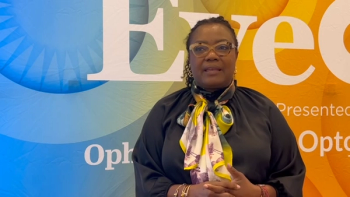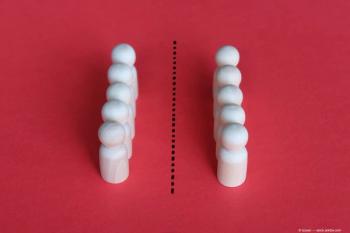
Cataract prevalence higher among Hispanic population
Baltimore?The prevalence of cataract is high among the Hispanic population of Mexican descent living in the United States?2.8%, according to a recent report from the Proyecto VER (Vision and Eye Research) survey of Hispanic individuals living in southern Arizona. A number of barriers, including lack of medical insurance and difficulty speaking English, impede these individuals in obtaining cataract surgery, according to Aimee Teo Broman, MA.
Baltimore-The prevalence of cataract is high among the Hispanic population of Mexican descent living in the United States-2.8%, according to a recent report from the Proyecto VER (Vision and Eye Research) survey of Hispanic individuals living in southern Arizona. A number of barriers, including lack of medical insurance and difficulty speaking English, impede these individuals in obtaining cataract surgery, according to Aimee Teo Broman, MA.
Broman and colleagues studied a random sample of individuals who were 40 years of age and older living in two cities in southern Arizona: Nogales and Tucson.
After subjects provided informed consent, interviewers administered an in-home questionnaire in English or Spanish. The questionnaire covered educational level, socioeconomic status, history of vision problems, visits to an eye care professional, and patient-reported history of diabetes.
The home visit was followed up by an examination at a central clinic. Blood was drawn to determine diabetes status. All participants underwent a visual acuity examination and a dilated examination to determine the presence, type, and severity of lens opacities. In this study, visually significant cataract was defined as severe opacity and visual acuity less than 20/40 in that eye, according to Broman, the lead author of the study, who is assistant professor at the Dana Center for Preventive Ophthalmology, Johns Hopkins School of Medicine, Baltimore.
The investigators reported that 4,774 individuals, which was 72% of those contacted, participated. Those who did not participate were in the youngest or oldest age categories; among those who did participate, 61.2% were women and 28.2% were over age 65 years.
Most subjects (87.7%) had no cataract and had not undergone a previous cataract surgery; 2.3% or 109 individuals had a "unilateral visually significant cataract (29 of these had surgery in the other eye); 26 (0.5%) had bilateral visually significant cataract; and 244 (5.1%) had undergone bilateral cataract surgery. There were 90 participants (1.9%) with eyes that could not be graded for cataract or cataract surgery status, the authors reported (Archives of Ophthalmology 2005;123:1231-1236). In the last group the authors noted that the primary reason cataracts could not be graded was a contraindication to or refusal to use the dilating eye drops.
They also reported that the age-specific prevalence of visually significant cataract seemed to be slightly higher for women, but the age-adjusted odds of having cataract was the same for both men and women (odds ratio, 1.32; p = 0.16).
"The prevalence of visually significant cataract increased with age, as did the prevalence of bilateral cataract surgery," the authors reported.
A noteworthy finding was that the rate of visually significant cataract and cataract surgery was higher in this population compared with the rates in a Caucasian and African-American population. In addition, the rates of cataract surgery were higher in this population compared with estimated rates of a combination of population-based studies in the United States.
Risk higher
"Our data suggest that, even after adjusting for high rates of diabetes mellitus, U.S. Hispanic individuals are at greater risk of having a visually impairing cataract than either African American or white individuals. Cataract is the leading cause of visual impairment in this population and is associated with lower levels of self-reported quality of life; however, in this population, a significant percentage of those who likely need cataract removal have never obtained surgery," the investigators noted.
Access to medical care and preferred spoken language were two factors that affected the rate of cataract surgery in this study. About 30% of the individuals who needed cataract surgery did not have medical insurance. Also, those who were comfortable speaking English were almost twice as likely to undergo cataract surgery compared with those who preferred speaking Spanish.
The authors pointed out the need for intervention in this population.
"Further work to remove the barriers [to cataract surgery] and provide sight restoration is warranted among Hispanic individuals living in the United States," Broman said.
"Although eye care was readily available in the communities we surveyed, there were people there who needed cataract removal and were not obtaining surgery," Broman concluded. "Better economic resources and Spanish language services would help improve access to eye care by the Hispanic community."
Newsletter
Don’t miss out—get Ophthalmology Times updates on the latest clinical advancements and expert interviews, straight to your inbox.


















































.png)


